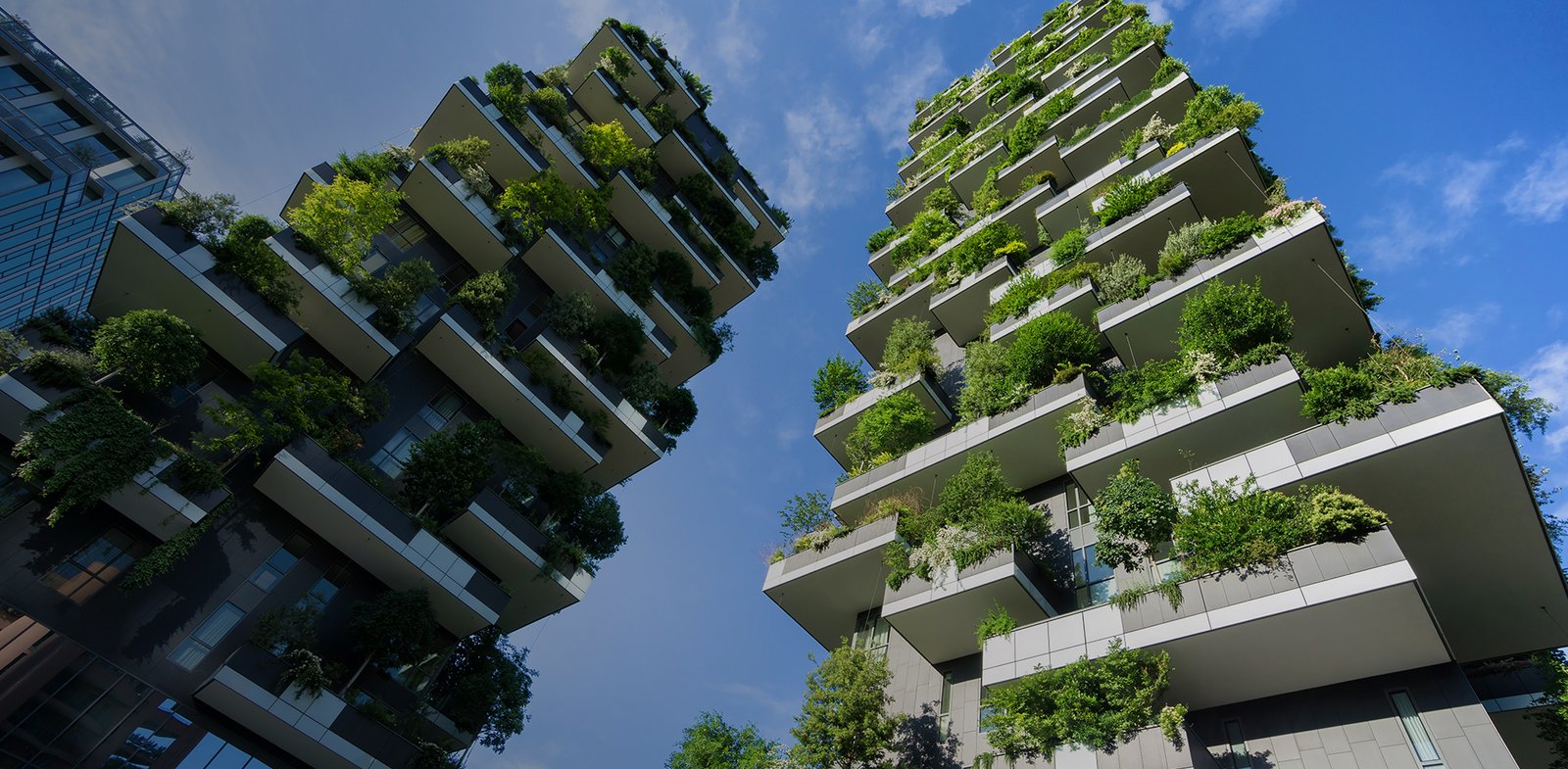Sustainability is meeting the needs of today in such a way that it saved for the future generations to come, it is the ability of our society to coexist in the same biosphere. The concept of sustainability is based on three pillars-economic, environmental and social which are commonly known as the profits, plants and people. Sustainability can be adopted by people all around the globe by minimized alteration in their lifestyle, like the big companies could sustainability goals promoting zero waste ideologies, or simply by cutting emission.
The main aim of sustainability is for the people and their well being wherein there is an equilibrium maintained between nature and society. The key factors that influence sustainability are majorly due to the change of climate on a global scale, the economic fluctuations and growing pollution rates. This is a conscious approach towards the environment.

The Sustainable Buildups
Sustainable architecture is the branch of science and art which approaches the design concept of the structure in such a way in which it minimizes the effect on environment with adding on to the aesthetic elements to it. The most important goal of sustainability in buildings is the energy efficiency, which can be implemented in various active and passive ways by which the building would take less energy from its environment and is self sufficient to create its own energy based on the ventilations and solar heat gain process. Buildings give out energy in various forms of water, air and composts which can be reutilized in the incoming fresh air and water while for recycling the garden compost anaerobic digesters are required.
The passive solar building design lets the building produce energy from the source sun without the help of any active solar mechanism like photoelectric cells and solar hot water panels. They are usually made up of materials that have a higher rate of thermal mass which can retain heat successfully along with providing insulation, incorporating solar shading can also help in consumption of lower energy. Also having a multi winged design in this case is not really advised instead having a centralized organization is preferred.

Windows are oriented in such a way that maximum natural light can be used such as double or triple glazed insulated windows with gas filled spaces and low emissivity (low-E) coatings, provide much better insulation than single-pane glass windows. In colder countries trapping the heat is the real trick towards sustainability, whereas in hotter countries the cooling system is the primary concern, building materials with higher thermal mass are very valuable here. In areas where there exists all four climates an integrated energy system is installed which can server all the purposes as and when required.
Generation of Renewable Sources of Energy
The renewable sources of energy can be generated in a number of ways like by installing solar panels on the roof inclined towards the sun to collect maximum efficiency, in northern hemisphere a south facing panel is advised while that should not be advised in cold countries. Wind turbines are also a very underrated option which has its own merits in energy production in sustainability, a small wind turbine can be installed on the roof which can generate from 10% to 25% of the electrical energy that is needed for domestic purposes. Solar water heating systems which are commonly called as the solar domestic water heating system can also be installed as it is a almost free consideration where sunshine is available hence can be used in all climates.
The two most common types of such panels are Flat-Plate and Evacuated-tube, they work almost on similar principles other than the fact that that evacuated tubes do not convectively lose heat, which greatly improves their efficiency (5%-25% more efficient). Installation of heat pumps that are air sourced works on a mechanism which is opposite to that of the air conditioners, it takes heat from a relatively cooler place and then dumps it into a hot place, however unlike an air conditioner, the condenser and evaporator of an ASHP can switch roles and absorb heat from the cool outside air and dump it into a warm house.
The sustainable Construction Materials
Sustainable materials that can be certainly used for building construction are recycled materials such as reclaimed lumber or recycled copper, low volatile organic compounds such as cellulose insulation and recycled denims.
Waste management is also a key note in evolving sustainability as disposing the various types of wastes in a properly segregated way which would then be recycled would lead to a huge progress.



